Box jellyfish adaptations ideas
Home » Wallpapers » Box jellyfish adaptations ideasYour Box jellyfish adaptations images are ready in this website. Box jellyfish adaptations are a topic that is being searched for and liked by netizens now. You can Get the Box jellyfish adaptations files here. Find and Download all free photos and vectors.
If you’re searching for box jellyfish adaptations images information connected with to the box jellyfish adaptations keyword, you have pay a visit to the ideal blog. Our website frequently gives you hints for seeking the highest quality video and picture content, please kindly hunt and find more enlightening video content and images that fit your interests.
Box Jellyfish Adaptations. They can swim toward movement and may go into the shallows on hot cloudy still days in search of prey which in the summer wet season can lead to stings in murky coastal river waters. They have developed the ability to move rather than just drift jetting at up to four knots through. They have adapted to upcoming storms by developing another sense to predict upcoming storms and move to deeper cooler waters. Because their bodies are made up of about 90 percent water floating is very natural.
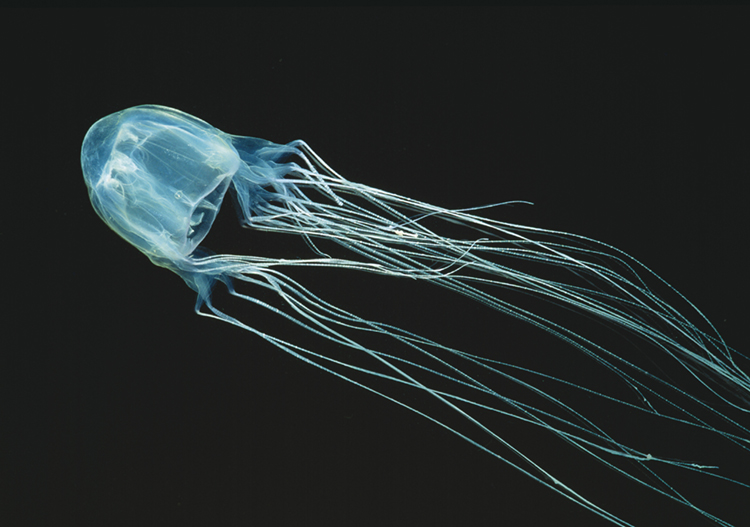 Monster Monday The Box Jellyfish World Book From worldbook.com
Monster Monday The Box Jellyfish World Book From worldbook.com
The fleckeri is capable to distinguish dark and light objects which is probably an adaptation to avoid predators. Their tentacles have nematocysts. Although a somewhat ungainly shape for swimming jellyfish have developed a few ways in which to propel themselves through the water. The Australian box jellyfish have evolved to possess photoreceptors however it is unable to identify colors of light. The Box Jellyfish has many differences that distinguish them from other species. For a simple creature like box jellyfish employing such a complex fishing strategy is very amazing.
Stinging cells are pressurized structures that fire a tiny barbed harpoon into predators and prey injecting a painful and paralyzing venom.
That attack the heart nervous system and skin cells. Because the Box Jellyfishs powerful venom when they strike their prey will die almost. Box jellyfish have sophisticated adaptations for active hunting that other jellyfish lack. Highly-Advanced Adaptations Box jellies are highly advanced among jellyfish. Jellyfish are bell shaped or umbrella shaped creatures that have adapted themselves very well for a life in water. They have long tentacles which are flexible limbs that have multiple purposes including acting as arms to grab food.
 Source: animals.net
Source: animals.net
These species have also evolved a form of internal fertilization. Unlike other jellyfish which usually float passively around in the current the sea wasp swims at speeds of about 4 ½ miles 7 kilometers per hour. They can swim toward movement and may go into the shallows on hot cloudy still days in search of prey which in the summer wet season can lead to stings in murky coastal river waters. Highly-Advanced Adaptations Box jellies are highly advanced among jellyfish. Box jellyfish have sophisticated adaptations for active hunting that other jellyfish lack.
 Source: study.com
Source: study.com
Irukandji adaptations The key to the Irukandjis success over hundreds of millions of years is the venom packed nematocyst or stinging cell. Some species within Cubozoa have pretty elaborate behaviors likely a result of their sensory ability. Stinging cells are pressurized structures that fire a tiny barbed harpoon into predators and prey injecting a painful and paralyzing venom. Because the Box Jellyfishs powerful venom when they strike their prey will die almost. Although a somewhat ungainly shape for swimming jellyfish have developed a few ways in which to propel themselves through the water.
 Source: slideplayer.com
Source: slideplayer.com
Although the jellyfish eyes cannot form images yet it helps the animal to detect motion. Box jellyfish are known for the extremely potent venom produced by some speciesBox jellyfish most visibly differ from the true or Sycphozan jellyfish in that their umbrellas are cubic rather. The sea wasp has a whopping 24 eyes. They have adapted to their surroundings over generations through mutations in the DNA sequence. Jellyfish are bell shaped or umbrella shaped creatures that have adapted themselves very well for a life in water.
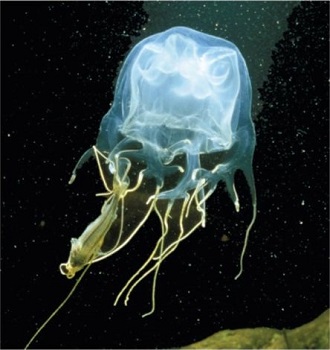 Source: study.com
Source: study.com
Unlike other jellyfish which usually float passively around in the current the sea wasp swims at speeds of about 4 ½ miles 7 kilometers per hour. More than 700 million years ago the Jellyfish was on Earth so they are able to adapt to changes all around them. Found most often in summer in inshore waters as they feed on bay-dwelling prawns coastal mangroves creeks and rivers. Stinging cells are pressurized structures that fire a tiny barbed harpoon into predators and prey injecting a painful and paralyzing venom. They have adapted to their surroundings over generations through mutations in the DNA sequence.
 Source: prezi.com
Source: prezi.com
As you already know they have microscopic eyes on the sides of their bells. More than 700 million years ago the Jellyfish was on Earth so they are able to adapt to changes all around them. They have adapted to their surroundings over generations through mutations in the DNA sequence. What Do Box Jellyfish Eat 510 views. These species have also evolved a form of internal fertilization.
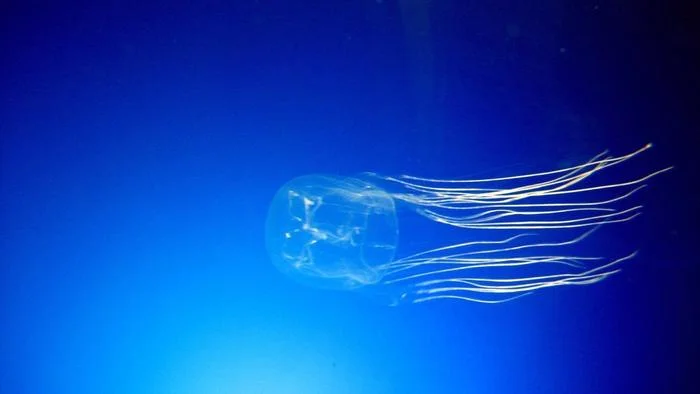 Source: kidzfeed.com
Source: kidzfeed.com
Adaptations in the ocean Jellyfish have been around for millions of years and over time the environment changes. Because the Box Jellyfishs powerful venom when they strike their prey will die almost. Adaptations in the ocean Jellyfish have been around for millions of years and over time the environment changes. Some adaptations are obvious like the stinging tentacles and blob body but some are more complicated like how the shape of the Box Jellyfish is actually a square on 3 sides hence the name Box Jellyfish and how the Jellyfish forces itself at its prey instead of just drifting toward it. They have adapted to their surroundings over generations through mutations in the DNA sequence.
 Source: worldbook.com
Source: worldbook.com
Some adaptations are obvious like the stinging tentacles and blob body but some are more complicated like how the shape of the Box Jellyfish is actually a square on 3 sides hence the name Box Jellyfish and how the Jellyfish forces itself at its prey instead of just drifting toward it. The Box jellyfish has the most deadly venom in the world containing toxins. Some species within Cubozoa have pretty elaborate behaviors likely a result of their sensory ability. That attack the heart nervous system and skin cells. The sea wasp has a whopping 24 eyes.
 Source: study.com
Source: study.com
One adaptation of box jellyfish is that they lure larval fish by twitching their tentacles and showing off their stinging structures. The Box jellyfish has the most deadly venom in the world containing toxins. The class Cubozoa includes the infamous box jellyfish which is regarded as one of the most venomous creatures on earth and is known for its small size and deadly stings. Some species within Cubozoa have pretty elaborate behaviors likely a result of their sensory ability. One adaptation of box jellyfish is that they lure larval fish by twitching their tentacles and showing off their stinging structures.
 Source: slideshare.net
Source: slideshare.net
Box Jellyfish Evolution It is very difficult to understand the evolution process for Jellyfish as a whole including the presence of the Box Jellyfish. The Australian box jellyfish have evolved to possess photoreceptors however it is unable to identify colors of light. They have long tentacles which are flexible limbs that have multiple purposes including acting as arms to grab food. What Do Box Jellyfish Eat 510 views. Some adaptations are obvious like the stinging tentacles and blob body but some are more complicated like how the shape of the Box Jellyfish is actually a square on 3 sides hence the name Box Jellyfish and how the Jellyfish forces itself at its prey instead of just drifting toward it.
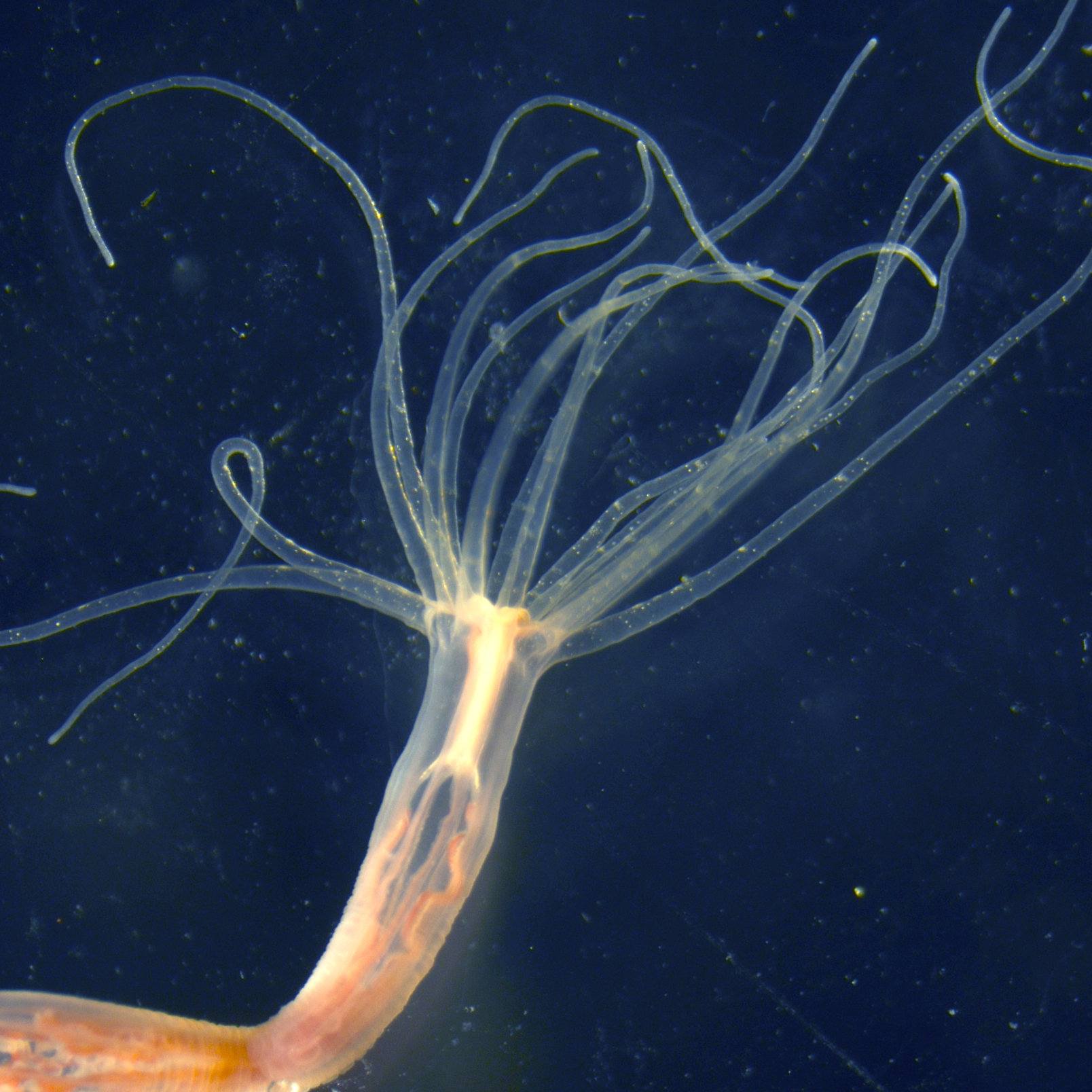 Source: phys.org
Source: phys.org
The Box Jellyfish has many differences that distinguish them from other species. Stinging cells are pressurized structures that fire a tiny barbed harpoon into predators and prey injecting a painful and paralyzing venom. The Australian box jellyfish have evolved to possess photoreceptors however it is unable to identify colors of light. These species have also evolved a form of internal fertilization. Irukandji adaptations The key to the Irukandjis success over hundreds of millions of years is the venom packed nematocyst or stinging cell.
 Source: bioexpedition.com
Source: bioexpedition.com
The sea wasp has a whopping 24 eyes. They have long tentacles which are flexible limbs that have multiple purposes including acting as arms to grab food. Irukandji adaptations The key to the Irukandjis success over hundreds of millions of years is the venom packed nematocyst or stinging cell. Box Jellyfish Evolution It is very difficult to understand the evolution process for Jellyfish as a whole including the presence of the Box Jellyfish. Some adaptations are obvious like the stinging tentacles and blob body but some are more complicated like how the shape of the Box Jellyfish is actually a square on 3 sides hence the name Box Jellyfish and how the Jellyfish forces itself at its prey instead of just drifting toward it.
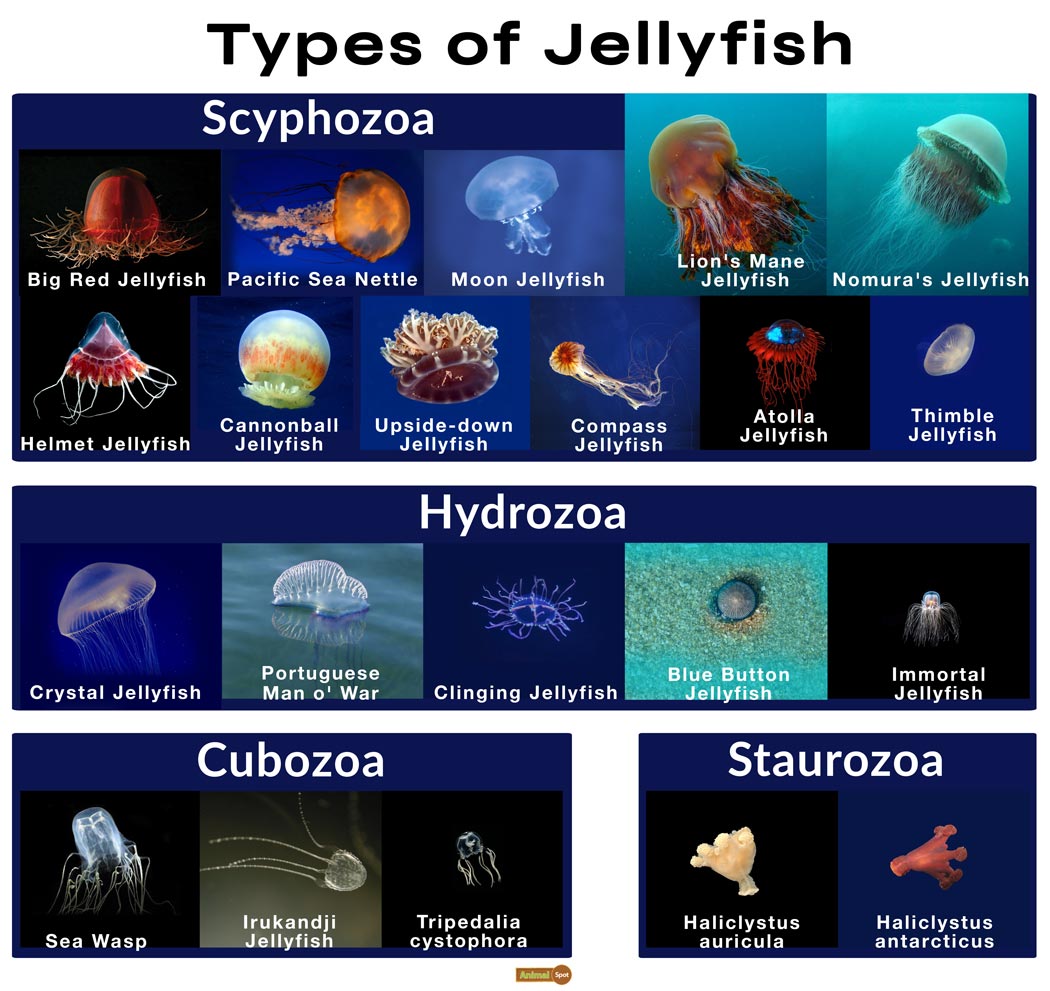 Source: animalspot.net
Source: animalspot.net
More than 700 million years ago the Jellyfish was on Earth so they are able to adapt to changes all around them. Box Jellyfish Evolution It is very difficult to understand the evolution process for Jellyfish as a whole including the presence of the Box Jellyfish. One adaptation of box jellyfish is that they lure larval fish by twitching their tentacles and showing off their stinging structures. The Box Jellyfishs average height is 10 feet tall. More than 700 million years ago the Jellyfish was on Earth so they are able to adapt to changes all around them.

Although a somewhat ungainly shape for swimming jellyfish have developed a few ways in which to propel themselves through the water. That attack the heart nervous system and skin cells. Box Jellyfish Evolution It is very difficult to understand the evolution process for Jellyfish as a whole including the presence of the Box Jellyfish. Highly-Advanced Adaptations Box jellies are highly advanced among jellyfish. They have adapted to their surroundings over generations through mutations in the DNA sequence.
 Source: nationalgeographic.com
Source: nationalgeographic.com
Adaptations in the ocean Jellyfish have been around for millions of years and over time the environment changes. The Box Jellyfish has many differences that distinguish them from other species. Jellyfish are bell shaped or umbrella shaped creatures that have adapted themselves very well for a life in water. The sea wasp has a whopping 24 eyes. The Australian box jellyfish have evolved to possess photoreceptors however it is unable to identify colors of light.
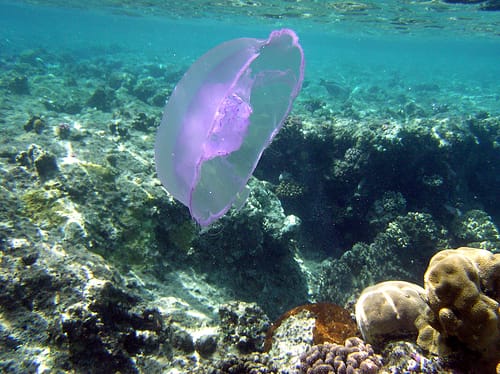 Source: animalspot.net
Source: animalspot.net
They have developed the ability to move rather than just drift jetting at up to four knots through. The fleckeri is capable to distinguish dark and light objects which is probably an adaptation to avoid predators. They have adapted to their surroundings over generations through mutations in the DNA sequence. Jellyfish are bell shaped or umbrella shaped creatures that have adapted themselves very well for a life in water. Some jellyfish prefer to float letting the current carry them here and there.
 Source: kibrispdr.org
Source: kibrispdr.org
Stinging cells are pressurized structures that fire a tiny barbed harpoon into predators and prey injecting a painful and paralyzing venom. The fleckeri is capable to distinguish dark and light objects which is probably an adaptation to avoid predators. The Box jellyfish has the most deadly venom in the world containing toxins. As you already know they have microscopic eyes on the sides of their bells. Stinging cells are pressurized structures that fire a tiny barbed harpoon into predators and prey injecting a painful and paralyzing venom.
 Source: brighthub.com
Source: brighthub.com
Although the jellyfish eyes cannot form images yet it helps the animal to detect motion. Highly-Advanced Adaptations Box jellies are highly advanced among jellyfish. They have long tentacles which are flexible limbs that have multiple purposes including acting as arms to grab food. The sea wasp has a whopping 24 eyes. As you already know they have microscopic eyes on the sides of their bells.
 Source: nationalgeographic.com
Source: nationalgeographic.com
Although the jellyfish eyes cannot form images yet it helps the animal to detect motion. They can swim toward movement and may go into the shallows on hot cloudy still days in search of prey which in the summer wet season can lead to stings in murky coastal river waters. Highly-Advanced Adaptations Box jellies are highly advanced among jellyfish. Box Jellyfish Evolution It is very difficult to understand the evolution process for Jellyfish as a whole including the presence of the Box Jellyfish. They have long tentacles which are flexible limbs that have multiple purposes including acting as arms to grab food.
This site is an open community for users to submit their favorite wallpapers on the internet, all images or pictures in this website are for personal wallpaper use only, it is stricly prohibited to use this wallpaper for commercial purposes, if you are the author and find this image is shared without your permission, please kindly raise a DMCA report to Us.
If you find this site value, please support us by sharing this posts to your preference social media accounts like Facebook, Instagram and so on or you can also bookmark this blog page with the title box jellyfish adaptations by using Ctrl + D for devices a laptop with a Windows operating system or Command + D for laptops with an Apple operating system. If you use a smartphone, you can also use the drawer menu of the browser you are using. Whether it’s a Windows, Mac, iOS or Android operating system, you will still be able to bookmark this website.
Category
Related By Category
- Tour guide license ideas
- Green mantis ideas
- Anacondas images ideas
- Natural selection camouflage ideas
- Fighting cholitas information
- Black history month theme 2015 information
- Traveler catalogue information
- National geographic colorado information
- Holiday planets information
- Pacific ocean animals information